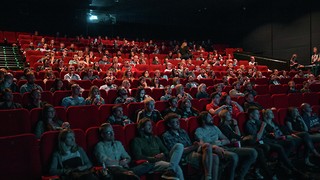Faking It
The V&A and the National Gallery will be holding exhibitions of art forgeries to show that in the dark but profitable world of forgery, a Vermeer is never what it seems.
Imitation, when it is not a forgery, can be a fine and flattering thing. Forgery however, when defined, is the process of making or imitating objects and documents with the intent to deceive.
But this malicious business, littered as it is with fakers and poseurs, has fairly innocuous beginnings. The classical period saw a great hunger for reproduced Greek sculpture at a time when the identity of the artist mattered far less than the aesthetic qualities or religious and historical inspirations of the piece itself.
It was only following the Renaissance that forgery became a dirty word. The gradual growth in the importance of the identity of the artist or author provoked Albrecht Durer to inscribe angrily on one of his engravings: “Be cursed plunderers and imitators of the work and talent of others”. Art, after all, had become a commodity, and a burgeoning 14th century middle class was fully aware that the monetary value of their artworks had come to depend upon the identity of their creators.
The forgers’ motive, meanwhile, seems always to have been money. Some have claimed that their forgeries were created to expose the credulity and snobbery of the art world, yet if this were true it would make the work a hoax; a forger, by definition, would not wish to see his fakes found out.
With literary or historical forgeries the motives can be somewhat more sinister than simply financial extortion. The Protocols of the Elders of Zion, a fraudulent publication outlining a Jewish conspiracy for global domination which appeared in 1903, has often been invoked and quoted by anti-Semites for nefarious political ends.
Similarly, as with the faked Diaries of Hitler and Jack the Ripper or the Turin Shroud, human nature will invariably prefer a conspiracy theory to no theory at all. Forgeries, in this instance, cater to our innate desire for explanation and pattern, not simply our apparent need to acquire sculptural or artistic beauty on the cheap.
It’s little coincidence that two major London galleries, the V&A and the National Gallery, are holding exhibitions on art forgery this year. Their detailed explorations into the dark world of fakes, trickeries and curator blunders, could not be more relevant today - covert and alarmingly common occurrences in a market straining to survive the recession. The last great period for forgers was the destitution of the 1980s; now that our economic situation is less confident than ever, can we be certain that the masterpieces we admire in galleries are real?
Forgery is a touchy subject. In our quest for information we got few straightforward answers from the art world’s big players. Scotland Yard refused to comment when approached for an interview. Exhibition curators similarly shied away from discussing the thriving black market trade that continues under their very noses and the notorious mistakes that have littered their recent past. Dealing in thousands of artworks every year, and under more pressure than ever to turn a profit, dealers and art ‘experts’ can choose to see what they want to see in works of dubious origins and even more dubious authenticity. This is complicated further by the increasingly complex methods of forgery; carbon dating can be outwitted by reforming authentic, historical materials into new artworks with a high commercial value. Similarly, an historical masterpiece with some small flaw might be restored or even reformed completely, raising the immediate value but corrupting history in the process.
All varieties of forgeries take their place in the age-old tradition that has existed as long as the art trade itself. In 1950s Germany, art ‘restorer’ Lothar Malskat was recruited to clean up the war-damaged frescoes of Lübeck Cathedral. It was only after he’d been paid, and the resulting work featured on a nationwide stamp campaign, that it was found he had whitewashed the walls instead, replacing them with anachronistic images including a turkey, the German Federal Minister, his sister-in-law and the actress Marlene Dietrich. Malskat ended up jailed for his ingenious forgeries, as did the UK’s most infamous master-forger, John Myatt, who flooded the market in the 90s with ‘lost masterpieces’ by Modigliani and Picasso, engineered from an artfully-distressed mixture of emulsion paint and KY Jelly. After he was sentenced to 12 months behind bars, Myatt emerged in 2000 to career as a legitimate artist, selling ‘genuine fakes’ for up to £50,000 per commission, and working in the forgery department of Scotland Yard.
Myatt’s triumph raises fundamental questions over the value of authenticity in today’s art market. Are we as consumers only comfortable with the familiar? Are we all too content to pay for a poor semblance of a masterwork? Artistic invention seems belittled here to the level of a designer handbag, something which can be easily replicated and wheeled out on an assembly line. The world’s current richest artist, Damien Hirst, demonstrated with his Dot Paintings that art today is a commercial affair, an update on the same sentiment expressed by Pop Art in the 60s. But this mass replication is unnatural when it is not abstract dots and plastic being dealt with, but the traditional craft of oil painting.
What does this do to our appreciation of the masters? National Gallery spokesman and gallery owner Tom Almeroth-Williams comments, “Art forgery immediately begs the question of value systems in the art world. What makes the original more valuable than a fake? In most high-profile cases this fake uncannily and skilfully resembles the original; if technical skill can be matched, then is it the celebrity culture around artists?”
He continues, “Is value created from the status of the piece as an historical artefact? Art defines and reveals historical epochs. So what if a fake was produced six months after the original? It would still define the same historical age. Does a forgery not have its own history?” Almeroth-Williams takes an apologetic approach to the likelihood of art dealers choosing to be “deceived” for sake of monetary gain, reasoning that artworks can be “wrongly upgraded”. He cites the example of A Man in an Armchair, for years attributed to Rembrandt, but which has in fact been discovered to be by one of his inner circle.
Most disconcertingly, it transpires that forgery is often institutionalised in the major art galleries. The Louvre employs forgers to recreate their most valued works, alternating them with originals to decrease the damage in the event of theft. So around two-thirds of art admirers and tourists who make the pilgrimage to Paris to see that most talked about of masterpieces, the Mona Lisa, have actually seen a fake.
Almeroth-Williams identifies a “level of genius” which a fake lacks beside the original, though he does acknowledge their level of technical brilliance and, perhaps surprisingly, their “emotional, historical and aesthetic value”, claiming that they help us to “gain a better appreciation and understanding of the original”. Even the academics cannot convincingly defend art value, unsure of whether they invest in artistic genius or the product art has become. Ultimately this is the ambiguity that makes the art market so vulnerable.
Those readers with a sharp eye, and an even keener sense of irony, will have noticed that the very first sentence of this brief history was, in itself, a forgery – a witticism appropriated from the pithy poet James Fenton. My defence, dear reader, is that even Picasso once remarked that he “would sign a very good forgery”.
The National Gallery’s ‘Close Examination: Fakes, Mistakes and Discoveries’ is open 30th June to 12th September, and the V&A’s ‘Metropolitan Police Service’s Investigation of Fakes and Forgeries’ runs from 23rd January to 7th February.
Famous forgers and fakers
Han van Meegeren (1889-1947) An art dealer charged with collaborating with the enemy in 1945, van Meegeren admitted that he had forged the works that he had sold to Hermann Goering. Considered the greatest forger of the 20th century, van Meegeren worked predominantly on paintings by Vermeer, many of which had been proclaimed masterpieces by scholars.
Elmyr de Hory (1905-1976) Immortalised in the 1976 film F for Fake by Orson Welles, the Hungarian art dealer Elmyr de Hory claimed to have sold over a thousand forgeries, ranging from Matisse to Modigliani, before being exposed in 1968.
Lothar Malskat (1913-1988) A restorer commissioned to work on the ceiling of the Marienkirche in Lübeck, Malskat repainted the Medieval frescoes with his own work, but was exposed when historical inconsistencies were found in it – such as an image of a turkey, which had not yet been introduced to Europe.
The Bolton Forgers In 2005, Sean Greenhalgh and his parents Olive (then 83) and George (84), were charged with forging over £10 million worth of artworks from their Bolton garden shed. Scotland Yard described them as “history’s most diverse art forgers”.
 News / Tompkins Table 2025: Trinity widens gap on Christ’s19 August 2025
News / Tompkins Table 2025: Trinity widens gap on Christ’s19 August 2025 Comment / A plague on your new-build houses18 August 2025
Comment / A plague on your new-build houses18 August 2025 News / Pro-Palestine activists spray-paint Barclays Eagle Labs18 August 2025
News / Pro-Palestine activists spray-paint Barclays Eagle Labs18 August 2025 News / Pro-Palestine activists urge new Chancellor to ‘condemn Israel’20 August 2025
News / Pro-Palestine activists urge new Chancellor to ‘condemn Israel’20 August 2025 News / Trinity sells O2 Arena lease for £90m12 August 2025
News / Trinity sells O2 Arena lease for £90m12 August 2025









